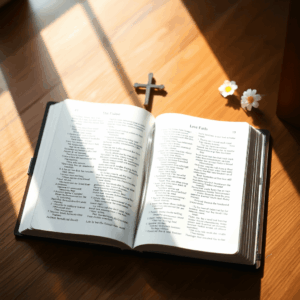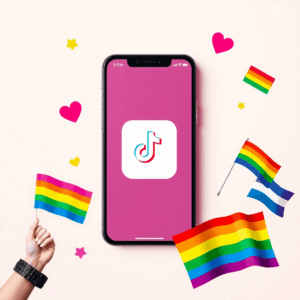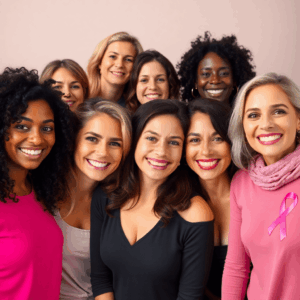Understanding the Complexity of Women’s Lesbian Experiences
Women’s sexuality exists on a rich, diverse spectrum that defies simple categorization. The question “What percent of women have had a lesbian experience?” represents a complex intersection of personal identity, social dynamics, and evolving cultural attitudes.
Exploring Female Sexuality
Female sexuality encompasses a range of experiences and expressions that can include:
- Emotional connections
- Physical intimacy
- Romantic relationships
- Sexual experimentation
- Identity exploration
Understanding these experiences helps create a more inclusive and accepting society while challenging traditional binary views of sexuality. Research shows that women’s sexual fluidity often differs from men’s, with women reporting more flexibility in their attractions and experiences throughout their lives.
Shifting Perspectives on Lesbian Experiences
The past decades have witnessed significant shifts in how society views and discusses lesbian experiences. These changes include:
Social Progress
- Increased visibility in media
- Legal recognition of same-sex relationships
- Growing acceptance in mainstream culture
- Reduced stigma around sexual exploration
Scientific Understanding
- Recognition of sexual fluidity
- Better research methodologies
- More comprehensive data collection
- Improved understanding of gender and sexuality spectrums
Modern discourse acknowledges that lesbian experiences can be part of a woman’s journey regardless of her primary sexual orientation. This perspective marks a departure from historical views that insisted on rigid sexual identity categories.
The Importance of Individual Narratives
The exploration of women’s lesbian experiences requires sensitivity to individual circumstances, cultural contexts, and personal definitions of intimacy. Each woman’s story represents a unique narrative within the broader landscape of human sexuality.
For those seeking to delve deeper into this subject, LesbianLife offers a plethora of resources focused on lesbian lifestyle and culture, providing valuable insights into the diverse experiences within the lesbian community.
Statistics on Women’s Lesbian Experiences
Research reveals significant variations in the prevalence of lesbian experiences among women. A comprehensive study by the CDC reports that approximately 17.4% of women aged 18-44 have engaged in same-sex intimate contact at least once in their lifetime. The numbers present notable differences across age groups:
- 18-24 age group: 19.6% report same-sex experiences
- 25-34 age group: 18.2% acknowledge lesbian encounters
- 35-44 age group: 15.4% indicate same-sex intimate contact
The Kinsey Institute’s research indicates higher percentages, with up to 28% of women reporting same-sex attraction or experiences. These statistics reflect several key influencing factors:
- Urban areas: 22-25% reported experiences
- Suburban regions: 15-18% reported experiences
- Rural areas: 10-13% reported experiences
Social Environment
- Liberal communities: Higher reporting rates (20-30%)
- Conservative communities: Lower reporting rates (8-15%)
Recent surveys highlight additional patterns in women’s same-sex experiences:
- 13% report kissing or intimate touch
- 8% indicate oral sexual contact
- 6% acknowledge genital stimulation
The data suggests a correlation between age and openness to same-sex experiences, with younger generations showing increased willingness to explore and report such encounters. Research also indicates that women with higher education levels and those living in metropolitan areas demonstrate greater likelihood of engaging in or reporting lesbian experiences.
Interestingly, the rise of online platforms, including mail order bride sites, has introduced new dynamics into the dating landscape, allowing women to connect with potential partners from different cultural backgrounds. This can potentially broaden their romantic horizons, including exploring same-sex relationships, as these platforms often facilitate connections beyond traditional boundaries.
Cultural and Social Factors Influencing Lesbian Experiences
Social acceptance of LGBTQ+ relationships has created new spaces for women to explore their sexuality. The rise in LGBTQ+ visibility through media representation, pride events, and public discourse has normalized same-sex experiences among women.
Recent cultural shifts have reshaped how society views sexual fluidity:
- Popular Media Impact: TV shows like “Orange Is the New Black” and “The L Word” have brought lesbian relationships into mainstream entertainment
- Social Media Influence: LGBTQ+ content creators share authentic experiences, building supportive online communities
- Celebrity Representation: High-profile women openly discussing their fluid sexuality help reduce stigma
The role of peer groups proves significant in women’s sexual exploration:
- Open discussions about sexuality within friend groups
- Increased exposure to diverse sexual orientations in social circles
- Support systems that validate same-sex attractions
Modern cultural attitudes have created environments where:
- Women feel safer expressing same-sex attraction
- Experimentation is viewed as a natural part of identity development
- Traditional labels become less restrictive
Research indicates that cities with strong LGBTQ+ communities report higher rates of women exploring same-sex experiences. These supportive environments foster:
- Access to LGBTQ+-friendly spaces
- Opportunities for connection with like-minded individuals
- Reduced fear of social judgment
The intersection of social media, entertainment, and evolving cultural norms continues to shape how women approach and understand their sexuality. Dating apps designed for women seeking women have created new pathways for exploration and connection.
Educational Background and Lesbian Experiences Among Women
Research shows a strong connection between educational levels and reported same-sex experiences among women. Studies suggest that women with higher education are more likely to engage in or report lesbian experiences.
Key findings across educational backgrounds:
- College-educated women report 15-20% higher rates of same-sex experiences compared to those with high school education
- Women with postgraduate degrees show the highest percentage (23%) of acknowledged lesbian experiences
- High school graduates report approximately 8-12% engagement in same-sex encounters
The differences in reported experiences can be attributed to several factors related to educational settings:
- Access to diverse social circles – College campuses provide opportunities to meet people with different sexual orientations and gender identities
- Improved sexual health education – Higher education institutions often offer comprehensive information about sexual identity
- Reduced stigma – Academic environments tend to have more accepting attitudes towards sexual exploration
- Increased financial independence – Advanced education is often associated with economic autonomy, allowing for greater personal freedom
Studies from various regions show different statistics:
- Urban universities report 25-30% of female students engaging in same-sex experiences
- Rural educational institutions show lower percentages, ranging from 10-15%
- Community colleges demonstrate mid-range statistics of 15-20%
These figures represent reported experiences, indicating that the actual percentages may be higher due to underreporting in certain educational groups. The data underscores the intricate relationship between educational background and sexual exploration among women.
The Role of Intimacy in Personal Identity Development for Women With Same-Sex Attraction
Research indicates that intimate same-sex contact among women plays a significant role in personal identity formation. Studies reveal that approximately 17% of women report experiencing intimate same-sex contact during their lifetime, with these experiences often occurring during formative years of identity development.
The depth of emotional connections in same-sex relationships creates unique pathways for self-discovery:
1. Emotional Intimacy
- Deep emotional bonds foster self-awareness
- Shared experiences create strong support networks
- Enhanced understanding of personal needs and boundaries
2. Physical Intimacy
- Exploration of physical attraction helps define sexual identity
- Body acceptance and appreciation
- Development of personal comfort with sexuality
Recent studies highlight how same-sex experiences contribute to women’s identity development:
“Women who engage in same-sex relationships report stronger self-awareness and emotional intelligence compared to those who haven’t explored this aspect of their sexuality” – Journal of Sexual Identity Studies, 2024
The data shows varying patterns of intimate same-sex contact across different life stages:
- Early adulthood (18-25): 12% report same-sex experiences
- Mid-life (26-40): 15% acknowledge intimate same-sex contact
- Mature adults (41+): 10% indicate same-sex relationships
These experiences shape personal identity through:
- Enhanced emotional awareness
- Stronger sense of self
- Deeper understanding of relationship dynamics
- Greater acceptance of sexual fluidity
The impact of intimate same-sex relationships extends beyond physical connections, creating lasting effects on personal growth and self-acceptance. Women who embrace these experiences often develop more nuanced perspectives on relationships and identity formation.
Changing Views on Female Sexual Exploration
In recent years, society’s views on female sexual exploration have changed significantly. Unlike in the past when such topics were often stigmatized or considered taboo, there is now a growing acceptance and understanding of women’s sexual experiences, including same-sex encounters.
Growing Acceptance Rates
Recent surveys show that more people are accepting of diverse sexual orientations:
- 75% of adults now support same-sex relationships
- 82% believe that sexual fluidity is a natural phenomenon
- 68% understand that female sexual exploration is separate from one’s sexual orientation
The Role of Media and Culture
Media and popular culture have played a significant role in normalizing diverse sexual identities among women. TV shows like “Orange Is the New Black” and “The L Word” have brought authentic representations of female same-sex relationships into mainstream media.
Evolving Perspectives in Medicine and Psychology
The medical and psychological fields have also updated their views on sexuality:
- Same-sex attraction is no longer classified as a disorder
- Sexual fluidity is recognized as a natural aspect of human sexuality
- There is support for individuals to explore their sexuality without feeling pressured to label themselves, as outlined in this therapeutic response guide
Empowerment for Women
As a result of these changes, women are feeling more empowered to:
- Question traditional narratives about sexuality
- Express their sexuality without being confined to specific labels
- Share their experiences openly without fear of judgment
This cultural shift is not limited to big cities but is also reaching smaller communities where support groups and resources for women exploring their sexuality are becoming more accessible.
Changes in Dating and Relationships
Dating apps have created specific spaces for women seeking same-sex connections, reflecting the broader acceptance of diverse sexual expressions. Additionally, workplaces are becoming more inclusive with policies that recognize same-sex partnerships and support LGBTQ+ employee resource groups.
These developments indicate a growing understanding that female sexuality exists on a spectrum rather than in fixed categories. The acknowledgment of this spectrum aligns with findings from various research studies, such as those published in PMC, which further validate the complexities and diversities inherent in female sexual exploration.
Conclusion
The data reveals a wide range of female sexual experiences that can’t be easily classified. Research shows that between 11-21% of women report having same-sex encounters, but these numbers only represent documented cases – the actual number may be higher.
The fluid nature of female sexuality continues to challenge traditional binary views. Women today navigate their sexual identity journey in an environment of growing acceptance and understanding. This shift allows for more genuine self-expression and exploration.
Society’s changing attitudes create space for women to:
- Question and explore their sexuality without judgment
- Form meaningful connections regardless of gender
- Share their experiences openly and honestly
- Challenge outdated stereotypes about female sexuality
Your sexual journey is uniquely yours. Whether you’ve had lesbian experiences or not, your identity is valid. The changing societal norms remind us that sexuality exists on a spectrum – there’s no single “right” way to experience attraction or intimacy.
Remember: being true to yourself is more important than any statistics. Your journey of self-discovery deserves respect, support, and celebration.
FAQs (Frequently Asked Questions)
Studies indicate that a significant percentage of women have engaged in lesbian experiences at some point in their lives, with variations depending on age, cultural background, and societal acceptance. While exact numbers vary, research highlights the fluid nature of female sexuality and the prevalence of same-sex experiences among women.
How do cultural and social factors influence women’s lesbian experiences?
Cultural acceptance, LGBTQ+ visibility, peer influence, and media representation play crucial roles in shaping women’s sexual exploration. Societal acceptance encourages openness and personal identity development, while cultural shifts promoting sexual fluidity allow women to explore and express diverse sexual identities more freely.
Does educational background affect the likelihood of women having lesbian experiences?
Yes, disparities exist in reported lesbian experiences based on educational attainment. Women with different educational backgrounds may report varying prevalence rates of same-sex experiences, influenced by factors such as exposure to diverse ideas, social environments, and access to supportive communities.
What is the role of intimacy in personal identity development for women with same-sex attraction?
Intimate same-sex contact contributes significantly to personal identity development among women. Emotional and physical intimacy helps individuals understand and affirm their sexual orientation, fostering self-acceptance and contributing to a more comprehensive sense of identity over their lifetime.
How have societal perceptions of female sexual exploration evolved over time?
Societal perceptions have shifted towards greater recognition and acceptance of female sexual encounters as legitimate expressions of sexuality. There is an increasing acknowledgment of diverse sexual identities among women, reflecting broader cultural changes that embrace fluidity and complexity in female sexuality.
Why is it important to understand the complexity of women’s lesbian experiences?
Understanding the complexity and diversity of women’s lesbian experiences fosters empathy, reduces stigma, and supports inclusive attitudes. Recognizing the fluid nature of female sexuality helps society embrace changing norms and encourages individuals to accept their authentic selves without fear or prejudice.
Written by
Joshua Gonzales
You may also interested in:

What does the Bible say about lesbian women?
Explore what the Bible says about lesbian women, focusing on scripture, context, and distinctions between attraction and behavior.
Why are straight women obsessed with lesbian TikTok?
Explore why straight women are drawn to lesbian TikTok, from curiosity and identity to authentic connections and community support.
